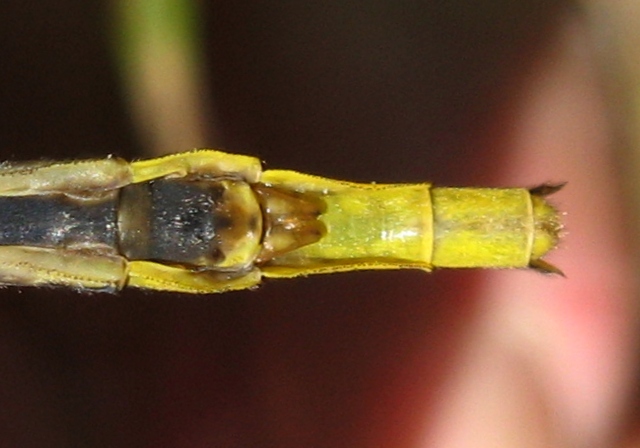Flight season: late May to mid-July.
Population: not uncommon, prefers ponds and marshy shorelines of lakes
with floating and emergent vegetation, such as the north shoreline of Stoco Lake.
Frequently encountered foraging along the trans-Canada Trail, a fair distance from water.
Length about 50 mm.
Several other clubtails are superficially similar –
the turquoise colored eyes, rusty patches on the sides of S8 and S9,
and the profile of the male's pale cerci separate this species from its relatives.
|
|
Tweed, Ontario, the north shore Stoco Lake, east of the boat pier:
marshy shoreline, relatively shallow water with mud bottom supporting sedges and rushes, pondweeds, Fragrant Water Lily, Blue Flag, Sagittaria spp and Pickerelweed.
|
|
Male Lilypad Clubtail (Arigomphus furcifer) –
a few other males were observed at this habitat, perching in the trees and shrubs,
and contesting one another for territorial rights (June 04, 2010).
|
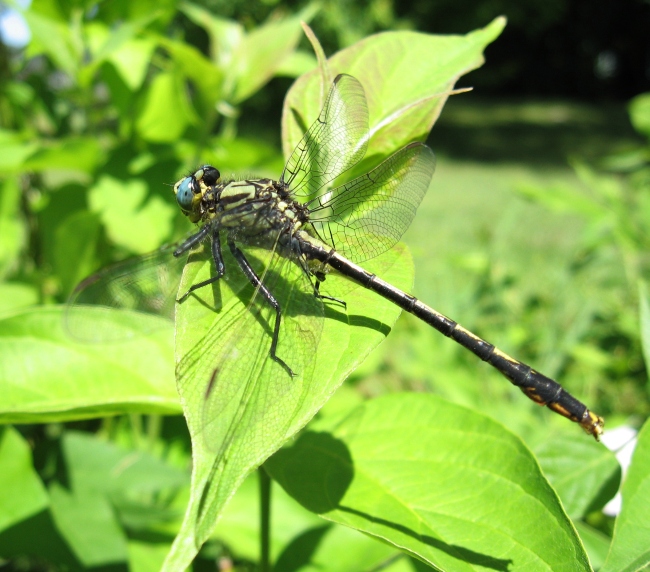
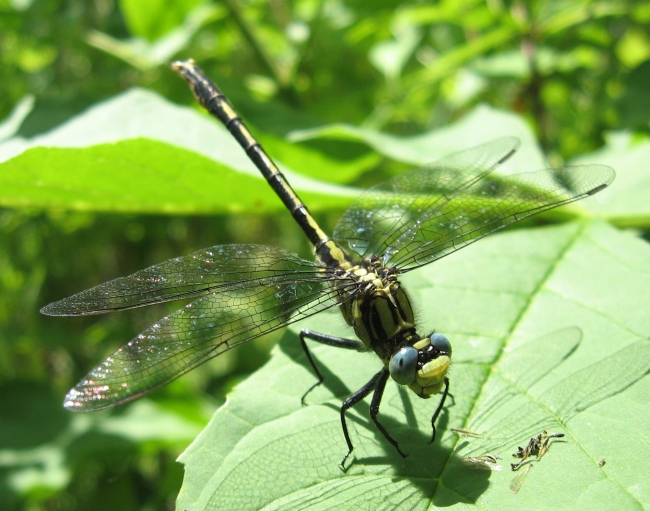
......................................................................
Female Lilypad Clubtail (Arigomphus furcifer)
June 15, 2010
|
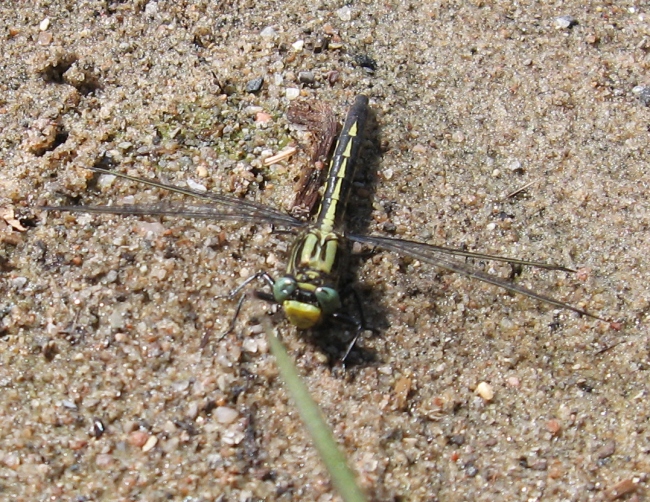

|
Tweed, Ontario: Metcalf Street, near the Tweed Public Library:
residential and business area.
|
|
Images of a male Lilypad Clubtail (Arigomphus furcifer) and its claspers
(June 03, 2011).
|
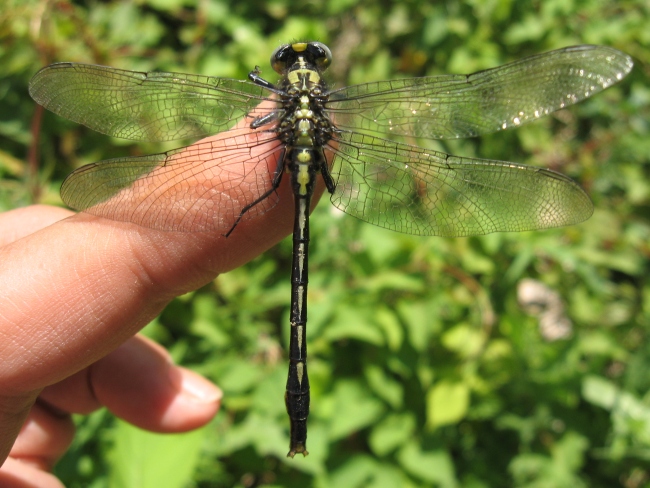
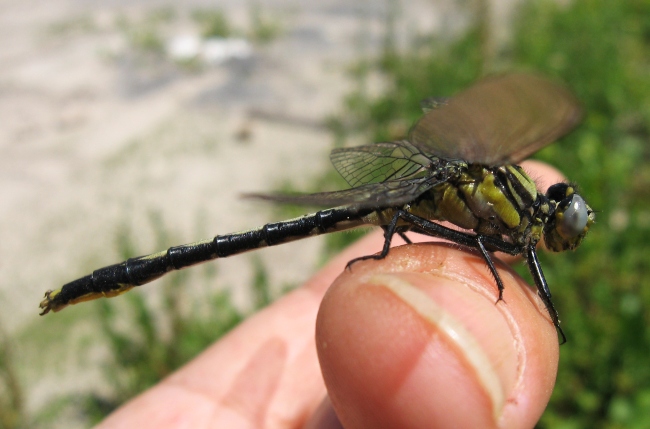
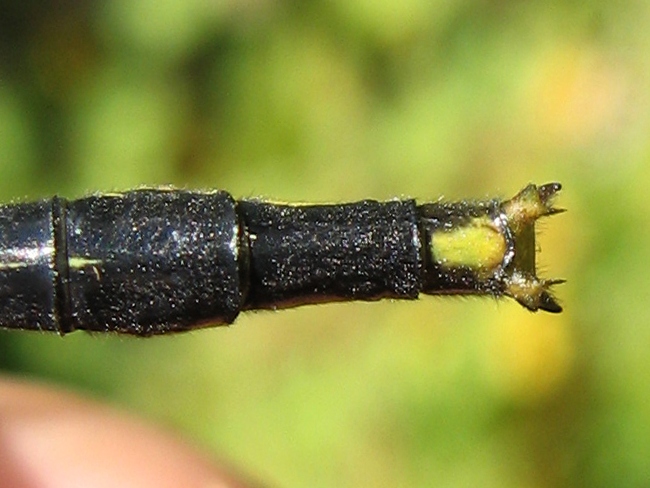
|
Vanderwater Conservation Area:
Moira River, rock-bottomed with fast flowing water, rapids and emergent rocks, but also quiet pools and backwaters.
The shoreline vegetation consists of wooded areas and clearings supporting tall grasses and wildflowers.
|
|
A male Lilypad Clubtail (Arigomphus furcifer) and its claspers
(June 15, 2014).
|
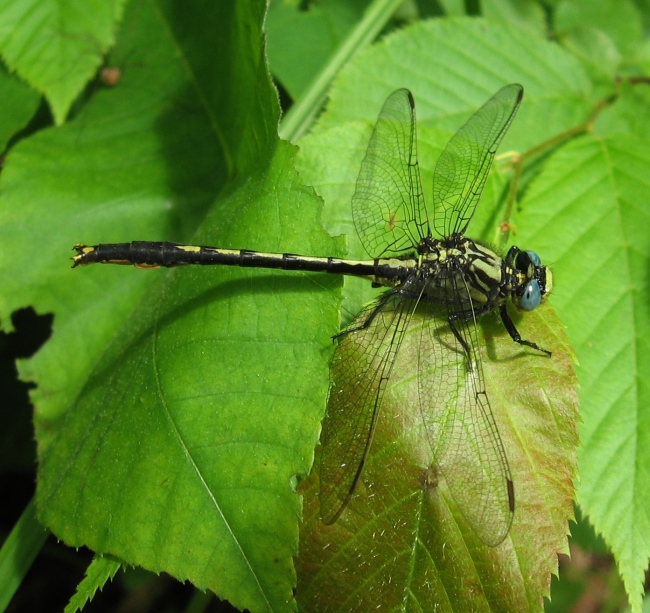
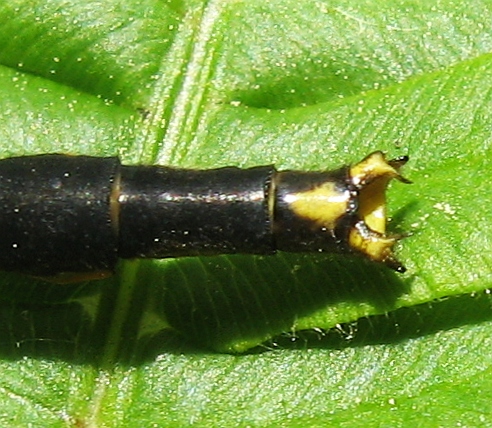
|
East of Tweed, Ontario, near intersection of Sulphide Road and the trans-Canada Trail:
vegetated border of the trail, near a sand-bottomed woodland stream, Stoco Lake is not far to the south.
|
Immature female Lilypad Clubtail (Arigomphus furcifer)
May 24, 2015
|
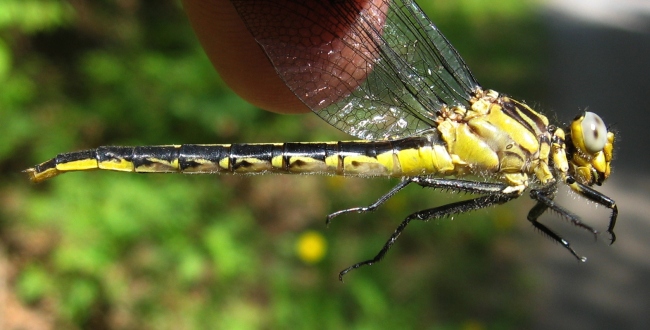
|
Dorsal aspect of the terminal abdominal segments –
note that S8 is dark, compare to the same abdominal segment of the Horned Clubtail
(May 24, 2015).
|
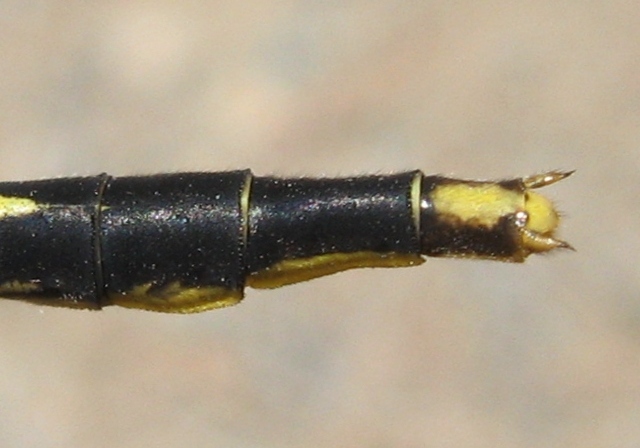
|
If the dragonfly can be captured the subgenital plate is always a reliable indicator of species (May 24, 2015).
|
